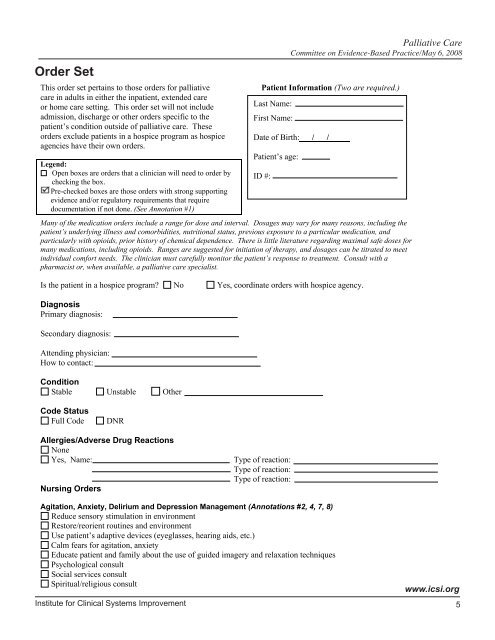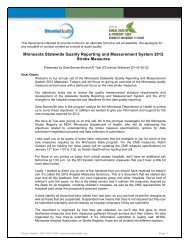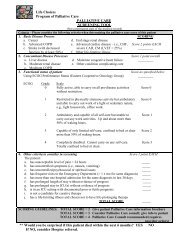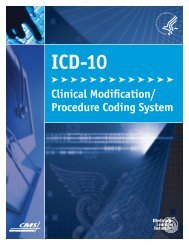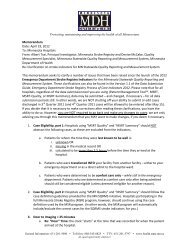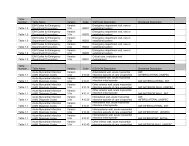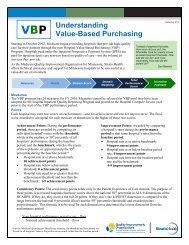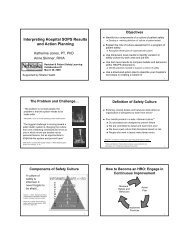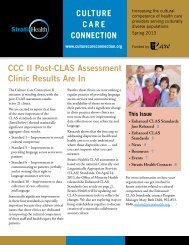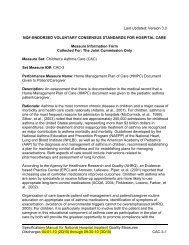Palliative Care Order Set - Stratis Health
Palliative Care Order Set - Stratis Health
Palliative Care Order Set - Stratis Health
You also want an ePaper? Increase the reach of your titles
YUMPU automatically turns print PDFs into web optimized ePapers that Google loves.
<strong>Order</strong> <strong>Set</strong><br />
This order set pertains to those orders for palliative<br />
care in adults in either the inpatient, extended care<br />
or home care setting. This order set will not include<br />
admission, discharge or other orders specific to the<br />
patient’s condition outside of palliative care. These<br />
orders exclude patients in a hospice program as hospice<br />
agencies have their own orders.<br />
Legend:<br />
Open boxes are orders that a clinician will need to order by<br />
checking the box.<br />
Pre-checked boxes are those orders with strong supporting<br />
evidence and/or regulatory requirements that require<br />
documentation if not done. (See Annotation #1)<br />
<strong>Palliative</strong> <strong>Care</strong><br />
Committee on Evidence-Based Practice/May 6, 2008<br />
Patient Information (Two are required.)<br />
Many of the medication orders include a range for dose and interval. Dosages may vary for many reasons, including the<br />
patient’s underlying illness and comorbidities, nutritional status, previous exposure to a particular medication, and<br />
particularly with opioids, prior history of chemical dependence. There is little literature regarding maximal safe doses for<br />
many medications, including opioids. Ranges are suggested for initiation of therapy, and dosages can be titrated to meet<br />
individual comfort needs. The clinician must carefully monitor the patient’s response to treatment. Consult with a<br />
pharmacist or, when available, a palliative care specialist.<br />
Is the patient in a hospice program? No Yes, coordinate orders with hospice agency.<br />
Diagnosis<br />
Primary diagnosis:<br />
Secondary diagnosis:<br />
Attending physician:<br />
How to contact:<br />
Condition<br />
Stable Unstable Other<br />
Code Status<br />
Full Code DNR<br />
Last Name:<br />
First Name:<br />
Date of Birth:___/___/_____<br />
Patient’s age:<br />
ID #:<br />
Allergies/Adverse Drug Reactions<br />
None<br />
Yes, Name:<br />
Nursing <strong>Order</strong>s<br />
Type of reaction:<br />
Type of reaction:<br />
Type of reaction:<br />
Agitation, Anxiety, Delirium and Depression Management (Annotations #2, 4, 7, 8)<br />
Reduce sensory stimulation in environment<br />
Restore/reorient routines and environment<br />
Use patient’s adaptive devices (eyeglasses, hearing aids, etc.)<br />
Calm fears for agitation, anxiety<br />
Educate patient and family about the use of guided imagery and relaxation techniques<br />
Psychological consult<br />
Social services consult<br />
Spiritual/religious consult<br />
Institute for Clinical Systems Improvement<br />
www.icsi.org


